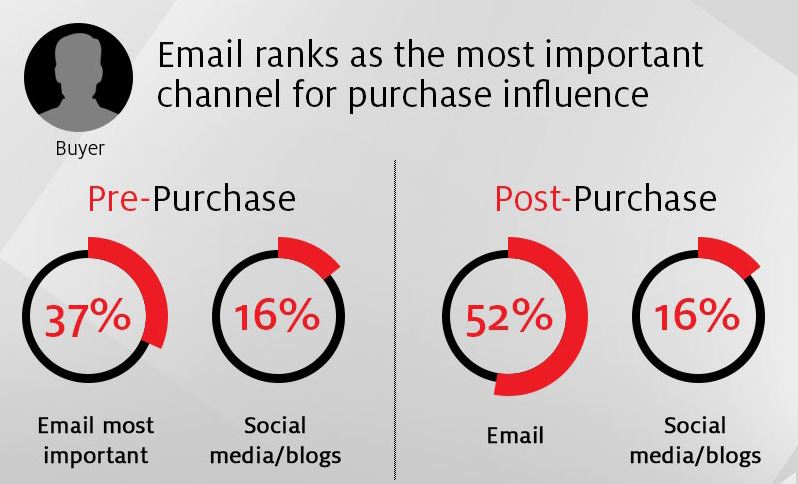When it comes to what influences consumer behavior, it seems that we are always desperately trying to assess consumer sentiment to remain one step ahead of buying patterns. However, with the advent of content marketing strategies—including podcasts ,webinars, Facebook, Instagram, blogging and banner ads, among others—it can be harder than ever before to pinpoint which specific communications vehicle to spend your precious marketing dollars on.
So how do your consumers want to be reached? And, more importantly, are you prepared to reach them through these channels?
According to a recent survey conducted by The Economist Intelligence Unit (EIU) and sponsored by Lyris, email marketing campaigns ranked as the most important channel for purchase influence. Specifically, pre-purchase, 37 percent of buyers view email as the most important channel (with social media and blogs coming in at 16 percent) and post-purchase buyers rank it at 52 percent with social media and blogs still at 16 percent. Yet only 68 percent of marketers are using enewsletter and email marketing campaigns to influence consumer behavior.

Moreover, interestingly enough, while marketers rank the personalization of their digital marketing campaign as their top strategy, buyers do not feel marketers are excelling in this area:
- 70 percent have become jaded and believe “attempts at personalization are superficial”
- 63 percent stated that personalization has become so commonplace that they are immune to this technique
As revealed in the survey, there currently exists a digital marketing gap—meaning that what consumers expect from marketers is not necessarily what they are delivering.
As a marketer, one of the first things that you can do to bridge the digital marketing gap is to ask to hear directly from your consumers. You can do this by employing a variety of content marketing tactics; use your blog, social media accounts, enewsletters and webinars to poll your customers to find out what is their most preferred method of communicating with and receiving news from your brand. Once you get this information—either informally or formally—spend some time reallocating resources to that preferred communications vehicle.
You also need to be cognizant of checking your metrics. This means examining your click through rates and website traffic fluctuations when it comes to your online blog, social media engagers and email marketing subscribers, among others. Numbers never lie. This means that if you see a huge surge in blogger comments and a decrease in your blog’s bounce rate, you can safely conclude that your entries are resonating with your target market. Conversely, if your number of Twitter followers remains stagnant, it might be time to rethink your social strategy on that platform.
When trying to mind the digital marketing gap, you will also want to take a second to make sure you understand what type of content marketing strategy will work best for your industry. For example, just because Pinterest exists does not mean that you should necessarily be on the platform. Instead, do your homework before diving into your digital marketing strategy. This includes determining which communications vehicles hold the attention of your consumers, what tone your consumers prefer to be spoken to and how they like to engage with their brands.
Edited by
Allison Boccamazzo















